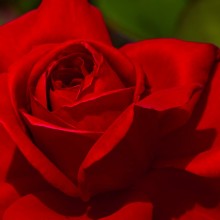So, you want to put a little Barry White in your garden…awwwww, yeah. Well, just put on this song and you’re done. Even if your yard is full of cars up on blocks and toilet planters, all you need is an outdoor speaker and that song and you’ll be…excuse me? Oh, you want to make it alluring to wildlife…oops…well, whatever blows your hair back. I guess I’ll write about that, if that is what you are into.
OK, so you want to turn your garden from Weird Al Yankovich into Barry White. Well, just like romance in the human realm, a lot depends on flowers. Different pollinators like flowers of different shapes and color. You’ve got to take a page out of that old romance handbook and figure out what your date or significant other is in the mood for. The best part is that, unlike the dating scene, there are charts that tell you what different pollinators like (In high school, I would have killed for a chart or slide rule or illustrated guide telling me how to be Barry White). One of the best we have found is the Pollinator Partnership which has pollinator guides for each of the ecoregions in the United States. The key to attracting pollinators is to plant a diversity of plants with different flower color, shape and flowering time. That said, you also don’t want a jumbled mess of every different type of plant you can get your hands on. Going back to the dating analogy, if you ran to the nearest park, grabbed one of every flower, shoved them into a bouquet and tied it together with a shoelace you found in the gutter, your date/spouse would not be too impressed. You want to plan ahead to create something that is both pleasing to you and the pollinators.
The first step is to figure out where you want to set up your little serenade to the pollinators. The best plan is to integrate them into the existing landscape around your house, perhaps by making existing beds a little bigger or putting in some new planting beds where you have turf. You could designate a particular area as a pollinator garden but you want it to fit in with the rest of your landscaping and not stick out. Areas with full sun or part sun will have a wider range of plant selection than those in shade. That said, a lot of shade plants flower in early spring when those sunny plants are barely out of the ground, again diversity is the key. Use the guide mentioned above or another one and look through the different plants and pick ones that you like. I like to break it up into about 4 different times (early spring, late-spring to early summer, mid-summer and late summer to fall) and, depending on the size of the garden, pick 1-3 plants that flower at each of these times. You can try to base them on what pollinators they attract but make sure that you like them too. Also, make sure to plant in masses because repetition is pleasing to the human eye and to pollinators. Insects have to learn how to get the nectar from different types of flowers so if there are lots of the same flowers in one area, it makes it easier for them. You also want to have a focal point which could be a birdbath, birdfeeder, medium to large shrub or small tree. Serviceberry is one that I like; it flowers in the spring, has berries in the early summer that birds love (they also taste a lot like blueberries and are high in anti-oxidants if you can beat the birds to them) and have excellent fall color. If you’d like help with the planning and layout process feel free to give us a call. While I am may not be Barry White with the ladies, I am pretty good with the birds and the bees….awwwwwww yeah!









